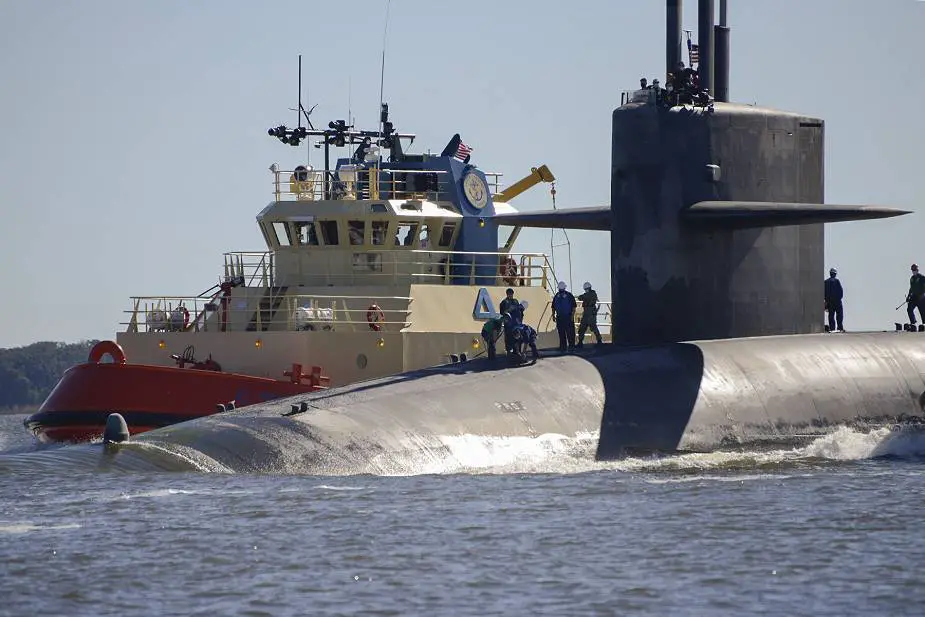Breaking news
Raytheon to provide SubHDR antenna communication systems for US Navy submarines.
According to a contract published by the U.S. Department of Defense (DoD) on December 3, 2020, American company Raytheon Co., Marlborough, Massachusetts, is awarded a $90,264,588 firm-fixed-price contract for 23 Submarine High Data Rate (SubHDR) antenna systems of U.S. Navy. The SubHDR antenna system is used to provide submarines with high capacity communications.
Follow Navy Recognition on Google News at this link
 The Ohio-class ballistic-missile submarine USS Tennessee (SSBN 734) (Blue) returns to homeport at Naval Submarine Base Kings Bay, Ga., following a strategic deterrent patrol. (Picture source U.S. Navy)
The Ohio-class ballistic-missile submarine USS Tennessee (SSBN 734) (Blue) returns to homeport at Naval Submarine Base Kings Bay, Ga., following a strategic deterrent patrol. (Picture source U.S. Navy)
Sub HDR links submariners to the Global Broadcast Service, the Milstar satellite constellation, and the Defense Satellite Communication System, via a unique mast antenna that connects them to the above-sea world.
Sub HDR gives submarines high data rate, multi-band SATCOM capability for the first time. The system lets sailors transmit and receive mission-critical information by raising a mast just above the ocean's surface while the ship is submerged at periscope depth. Operating via military satellites, Sub HDR enables underwater forces to be full participants in coordinated fleet battle group and joint task force network centric operations. The mast-mounted SATCOM system transmits secure wideband multi-media, secure and non-secure Internet access, voice and data traffic, imagery and video teleconferencing.
Sub HDR's acquisition began in 1996, following a competitive procurement and PEO C4I & Space's (The U.S. Navy Program Executive Office for Command, Control, Communications, Computers, Intelligence and Space's) selection of Raytheon. Within 21 months, the system performed a land-based, over-the-air demonstration of its Super High Frequency (SHF) and Extremely High Frequency (EHF) multi-band satellite tracking and communication capabilities. The multi-band SHF and EHF SATCOM mast was upgraded with Global Broadcast Service (GBS), Ka-band high data rate receive capability, in 1999. During low rate initial production (1999), seven systems were produced, and the system was subsequently tested on the attack submarine USS Providence SSN 719 in August 2000.




























